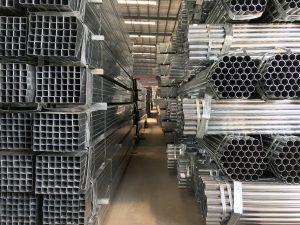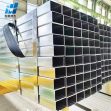Green innovation drives the steel industry
Green innovation is becoming increasingly important for the steel industry as global demand for steel continues to rise. Steel is a vital material in many industries, including construction, transportation, and energy. However, the production of welded steel pipe is one of the largest industrial sources of greenhouse gas emissions, making up around 7% of global emissions. To address this challenge, the steel industry is turning to green innovation to reduce its environmental impact.

One of the most promising areas of green innovation in the steel industry is the use of renewable energy sources. Many steel plants are situated in areas with ample sunlight or wind, making them ideal locations for solar or wind farms. By using renewable energy to power their operations, steel companies can significantly reduce their carbon footprint. Some steel companies are even investing in their own renewable energy projects, such as ArcelorMittal’s recent investment in a 500 MW wind farm in Mexico.
Another area of green innovation in the steel industry is the development of new production processes that are less carbon-intensive. One example of this is the use of hydrogen instead of coal or natural gas in the steel-making process. Hydrogen can be produced from renewable sources and emits only water vapor when burned, making it a much cleaner alternative to fossil fuels. Several China steel tube factories are already piloting hydrogen-based production processes, and the European Union has set a target of producing 100% green steel by 2050.
In addition to renewable energy and low-carbon production processes, the steel industry is also exploring new materials and designs that require less steel. For example, lightweight steel alloys can be used in automobiles to reduce their weight and improve fuel efficiency. Similarly, new building designs can use less steel while still meeting safety and structural requirements.
Green innovation in the steel industry is not just good for the environment; it can also be good for business. As consumers and governments around the world become more concerned about the environmental impact of the products they use and the companies they support, steel companies that embrace green innovation may have a competitive advantage. In addition, green innovation of rectangular hollow section can reduce costs by improving energy efficiency and reducing waste.
However, there are also challenges to implementing green innovation in the steel industry. One of the biggest challenges is the high cost of new technologies and processes of carbon steel pipe. Steel companies may be hesitant to invest in new green technologies if they are not yet cost-competitive with traditional, carbon-intensive methods. Governments and other stakeholders can help by providing incentives and funding for green innovation in the steel industry.
Tel: +86 18202256900 Email: steel@fwssteel.com
Previous: The balance of steel pipe balance
Next: Cost comparation










